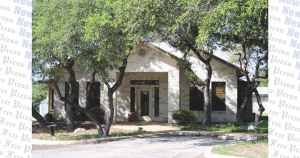(Editor’s Note: This story has been updated to correct the name of the organization from Monarch Utilities to Texas Water Utilities.)
HAYS COUNTY — The Barton Springs/Edwards Aquifer Conservation District declared a Stage IV Exceptional Drought status on Dec. 14, 2023 — the first time in 36 years.
Stage IV declaration restrictions went into effect on Jan. 1, 2024. This transition is a result of the Lovelady monitor well, one of two drought trigger determinants, reaching a 10-day average of 456.9 feet-mean sea level (ft-msl). This is below the district’s 457.1 ft-msl threshold for Stage IV. For reference, the average water level elevation for the Lovelady monitor well since measurements began in 1949 is 492.8 ft-msl.
This decline is representative of the alarmingly low water levels of the Barton Springs segment of the Edwards Aquifer, which serves as a drinking water source for over 60,000 people from south Austin to northern Kyle and is overseen and managed by the district.
Prior to entering Stage IV, BSEACD had been in Stage III Critical Drought since October 2022 when the Lovelady monitor well initially crossed the drought threshold. Lovelady groundwater levels and Barton Springs flow serve as the determinants for the district’s current drought stage. Only one of these sites needs to cross a new drought threshold for a district declaration to be made.
However, to exit a stage, both Barton Springs and Lovelady must rise above their respective drought threshold values.
Stage IV drought requires 30-100% reduction in pumpage by the district’s 149 permittees, which vary in size from individual well owners to larger water service providers like the cities of Buda, Kyle, Hays and Sunset Valley, according to a news release. Permittees will experience various degrees of restrictions based on their classification and those who don’t meet these restrictions are subject to monthly drought penalties. While the district doesn’t enforce restrictions on end users served by water utilities on groundwater wells, such as Creedmoor Maha Water Corp, Goforth Special Utility District and Texas Water Utilities, it is up to the permittee to ensure reductions are met. Water utility customers can contact their service provider for additional information.
The only way for groundwater resources to recover and end these drought conditions is a long period of widespread and significant rainfall over local aquifer recharge zones. Until this occurs, community members in and outside of the district can do their part by actively conserving water resources to minimize surface and groundwater depletion to help the aquifer levels recover. Groundwater use should be limited to essential indoor demands with little to no water allocated for outdoor purposes.
For more information, visit www.bseacd.org.










